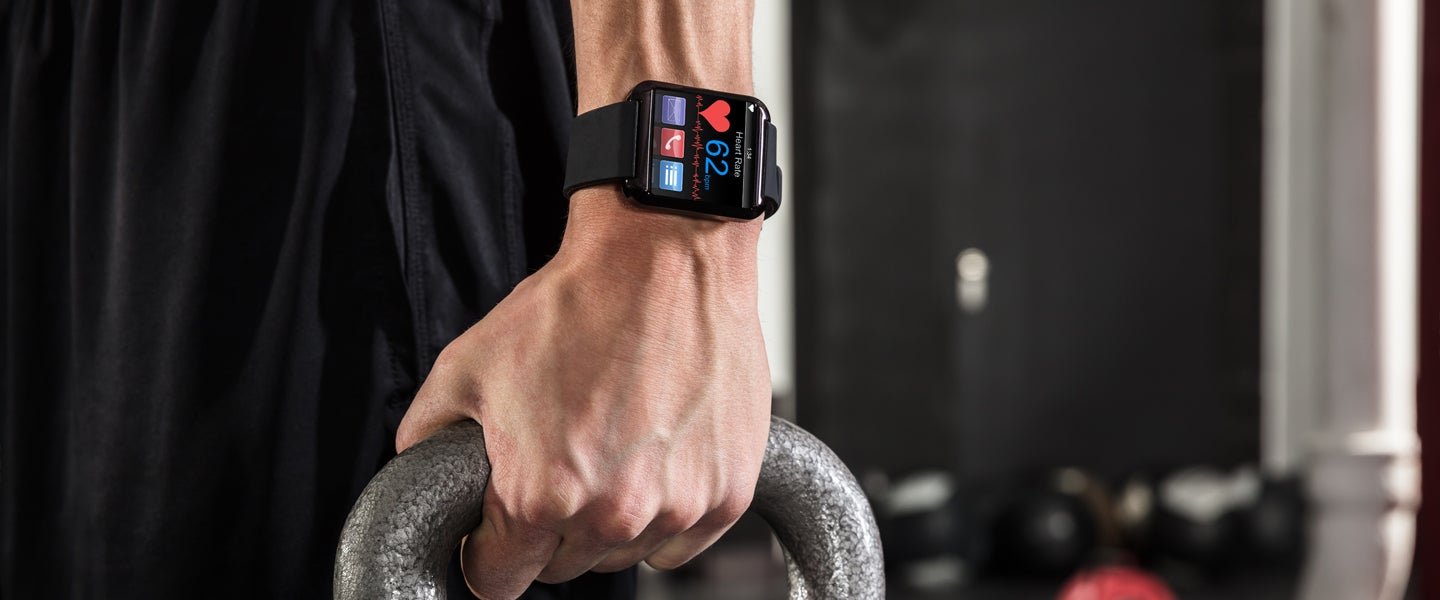When it comes to working out, we’re not all strongmen like Hafþór Júlíus Björnsson (aka The Mountain). In fact, many of us could go our entire lives and still have no clue how a lat pull-down differs from an incline bench. Which is to say, there’s no shame in not knowing your way around a gym, or how to start the process of getting in shape. Plus, that’s what we’re here for — to make sure that when you’re in the gym, you at least never have to sweat the small stuff.
I hear a lot about heart rate when I’m doing cardio (mostly on the machines themselves), but it’s not something I really think about when I’m working out. Should I be taking heart-rate zones more seriously?
You’re gonna hate me for saying this, but it really depends. Unlike when you’re lifting weights, when you’re doing cardio at the gym, what’s most important is that you’re reaching an aerobic state. Heart-rate zones — and monitoring your heart rate in general — help you do just that, which is both why they’re important, and why you don’t need them once you know what you’re doing.
First, let’s talk about aerobic exercise versus anaerobic exercise. Aerobic exercise is the kind that’s moderate to vigorous in intensity, and where your body uses oxygen to meet its energy needs. It’s great for when you’re trying to build endurance, but not when you’re looking for short-term energy.
Anaerobic exercise, on the other hand, is when your body is pushed beyond the limits of its oxygen intake, and begins burning glucose as its fuel to make up the difference. This is what happens when you push yourself really hard — like when you’re lifting weights or doing other strength training, for example — and it’s most important for people trying to build muscle mass.
Obviously, cardio, like what you’re doing on the bike, treadmill, row machine or in the pool, is generally meant to be aerobic. Which means you want to stress your heart by increasing the intensity of your workout without pushing it so far that you veer into anaerobic territory. Stressing your system aerobically, consistently, has myriad benefits: More efficient energy storage and metabolism, improved circulation, better endurance and enhanced recovery speed to name a few. Basically, with sustained aerobic exercise, your heart, lungs and circulatory system becomes healthier.
And that’s where heart-rate zones come in. Heart-rate zones, like what’s typically posted to or digitally read out on the monitor of your exercise machine, are percentages of your theoretical maximum heart rate, which is calculated by subtracting your age from 220 (mine, for example, is 185 beats per minute). For most folks, the aerobic range is between 50 percent and 85 percent of your maximum. Lower than that and you’re not working out intensely enough; higher, and you’re veering off into anaerobic land. Neither of which are good if you’re trying to achieve the benefits I laid out above.
But they’re also just guidelines, says David Geier, an orthopedic surgeon and sports-medicine specialist in South Carolina. “Heart-rate zones are based on a mathematical formula, and while they’re generally good rules of thumb, people who are in good shape are going to be able to handle those ranges better than others.”
Not only that, but cardio-machine sensors might be iffy, too, explains Geier. “I can’t vouch for how accurate the sensors on the machines are, but the ones that you can buy are probably going to be more accurate and have better data when you’re done than what you’ll get from the sensor.” So maybe stick with a heart monitor, fitness tracker or find your pulse the old fashioned way.
Plus, there are other, simpler ways to figure out if you’re getting the right kind of workout. Like if you’re breathing hard, or if you can maintain your pace for more than three minutes. If you can’t, that typically means you’ve hit your anaerobic threshold.
Regardless, your body is the best tool to determine how hard you should be working out. “You should really be basing your workouts on how you feel that day,” says Geier. “If you’ve had a long day at work, if you’re generally tired or struggling on the machine, maybe don’t push yourself into those higher heart-rate zones.
“And when you feel great? Maybe those are the days when you push yourself harder.”

